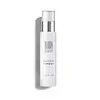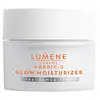What's inside
What's inside
 Key Ingredients
Key Ingredients

 Benefits
Benefits

 Concerns
Concerns

 Ingredients Side-by-side
Ingredients Side-by-side

Water
Skin ConditioningPropanediol
SolventStearyl Alcohol
EmollientCarthamus Tinctorius Seed Oil
MaskingCeteareth-20
CleansingDecyl Oleate
EmollientGlycine Soja Germ Extract
EmollientVitis Vinifera Seed Oil
EmollientGlycerin
HumectantAnthemis Nobilis Flower Extract
MaskingCetearyl Alcohol
EmollientCamellia Sinensis Leaf Extract
AntimicrobialOenothera Biennis Oil
EmollientOlea Europaea Fruit Extract
BleachingSodium Hyaluronate
HumectantNiacin
SmoothingRice Amino Acids
Skin ConditioningGlycine
BufferingPanthenol
Skin ConditioningXanthan Gum
EmulsifyingGlycogen
HumectantSaccharomyces Cerevisiae Extract
Skin ConditioningTocopheryl Acetate
AntioxidantSalicylic Acid
MaskingBisabolol
MaskingPhenoxyethanol
PreservativePotassium Sorbate
PreservativeEthylhexylglycerin
Skin ConditioningCitrus Grandis Peel Oil
MaskingTetrasodium EDTA
Water, Propanediol, Stearyl Alcohol, Carthamus Tinctorius Seed Oil, Ceteareth-20, Decyl Oleate, Glycine Soja Germ Extract, Vitis Vinifera Seed Oil, Glycerin, Anthemis Nobilis Flower Extract, Cetearyl Alcohol, Camellia Sinensis Leaf Extract, Oenothera Biennis Oil, Olea Europaea Fruit Extract, Sodium Hyaluronate, Niacin, Rice Amino Acids, Glycine, Panthenol, Xanthan Gum, Glycogen, Saccharomyces Cerevisiae Extract, Tocopheryl Acetate, Salicylic Acid, Bisabolol, Phenoxyethanol, Potassium Sorbate, Ethylhexylglycerin, Citrus Grandis Peel Oil, Tetrasodium EDTA
Water
Skin ConditioningPrunus Amygdalus Dulcis Oil
Skin ConditioningCoco-Caprylate/Caprate
EmollientSimmondsia Chinensis Seed Oil
EmollientRubus Chamaemorus Fruit Juice Extract
HumectantPropanediol
SolventCetearyl Olivate
Vaccinium Vitis-Idaea Fruit Juice
Skin ConditioningGlycerin
HumectantDimethicone
EmollientSorbitan Olivate
EmulsifyingAscorbyl Tetraisopalmitate
AntioxidantCetearyl Alcohol
EmollientNiacinamide
SmoothingRubus Chamaemorus Fruit Extract
AntioxidantRubus Chamaemorus Seed Oil
Skin ConditioningPhenoxyethanol
PreservativeSodium Polyacrylate
AbsorbentPanthenol
Skin ConditioningCetyl Palmitate
EmollientHydroxyacetophenone
AntioxidantSorbitan Palmitate
EmulsifyingMaltodextrin
AbsorbentSodium Polyglutamate
HumectantCetearyl Dimethicone Crosspolymer
Tocopheryl Acetate
AntioxidantXanthan Gum
EmulsifyingMica
Cosmetic ColorantEthylhexylglycerin
Skin ConditioningHydrolyzed Hyaluronic Acid
HumectantTocopherol
AntioxidantDisodium EDTA
Adenosine
Skin ConditioningHelianthus Annuus Seed Oil
EmollientRosmarinus Officinalis Leaf Extract
AntimicrobialCI 77891
Cosmetic ColorantWater, Prunus Amygdalus Dulcis Oil, Coco-Caprylate/Caprate, Simmondsia Chinensis Seed Oil, Rubus Chamaemorus Fruit Juice Extract, Propanediol, Cetearyl Olivate, Vaccinium Vitis-Idaea Fruit Juice, Glycerin, Dimethicone, Sorbitan Olivate, Ascorbyl Tetraisopalmitate, Cetearyl Alcohol, Niacinamide, Rubus Chamaemorus Fruit Extract, Rubus Chamaemorus Seed Oil, Phenoxyethanol, Sodium Polyacrylate, Panthenol, Cetyl Palmitate, Hydroxyacetophenone, Sorbitan Palmitate, Maltodextrin, Sodium Polyglutamate, Cetearyl Dimethicone Crosspolymer, Tocopheryl Acetate, Xanthan Gum, Mica, Ethylhexylglycerin, Hydrolyzed Hyaluronic Acid, Tocopherol, Disodium EDTA, Adenosine, Helianthus Annuus Seed Oil, Rosmarinus Officinalis Leaf Extract, CI 77891
Ingredients Explained
These ingredients are found in both products.
Ingredients higher up in an ingredient list are typically present in a larger amount.
Cetearyl alcohol is a mixture of two fatty alcohols: cetyl alcohol and stearyl alcohol. It is mainly used as an emulsifier. Emulsifiers help prevent the separation of oils and products. Due to its composition, it can also be used to thicken a product or help create foam.
Cetearyl alcohol is an emollient. Emollients help soothe and hydrate the skin by trapping moisture.
Studies show Cetearyl alcohol is non-toxic and non-irritating. The FDA allows products labeled "alcohol-free" to have fatty alcohols.
This ingredient is usually derived from plant oils such as palm, vegetable, or coconut oils. There is debate on whether this ingredient will cause acne.
Due to the fatty acid base, this ingredient may not be Malassezia folliculitis safe.
Learn more about Cetearyl AlcoholEthylhexylglycerin (we can't pronounce this either) is commonly used as a preservative and skin softener. It is derived from glyceryl.
You might see Ethylhexylglycerin often paired with other preservatives such as phenoxyethanol. Ethylhexylglycerin has been found to increase the effectiveness of these other preservatives.
Glycerin is already naturally found in your skin. It helps moisturize and protect your skin.
A study from 2016 found glycerin to be more effective as a humectant than AHAs and hyaluronic acid.
As a humectant, it helps the skin stay hydrated by pulling moisture to your skin. The low molecular weight of glycerin allows it to pull moisture into the deeper layers of your skin.
Hydrated skin improves your skin barrier; Your skin barrier helps protect against irritants and bacteria.
Glycerin has also been found to have antimicrobial and antiviral properties. Due to these properties, glycerin is often used in wound and burn treatments.
In cosmetics, glycerin is usually derived from plants such as soybean or palm. However, it can also be sourced from animals, such as tallow or animal fat.
This ingredient is organic, colorless, odorless, and non-toxic.
Glycerin is the name for this ingredient in American English. British English uses Glycerol/Glycerine.
Learn more about GlycerinPanthenol is a common ingredient that helps hydrate and soothe the skin. It is found naturally in our skin and hair.
There are two forms of panthenol: D and L.
D-panthenol is also known as dexpanthenol. Most cosmetics use dexpanthenol or a mixture of D and L-panthenol.
Panthenol is famous due to its ability to go deeper into the skin's layers. Using this ingredient has numerous pros (and no cons):
Like hyaluronic acid, panthenol is a humectant. Humectants are able to bind and hold large amounts of water to keep skin hydrated.
This ingredient works well for wound healing. It works by increasing tissue in the wound and helps close open wounds.
Once oxidized, panthenol converts to pantothenic acid. Panthothenic acid is found in all living cells.
This ingredient is also referred to as pro-vitamin B5.
Learn more about PanthenolPhenoxyethanol is a preservative that has germicide, antimicrobial, and aromatic properties. Studies show that phenoxyethanol can prevent microbial growth. By itself, it has a scent that is similar to that of a rose.
It's often used in formulations along with Caprylyl Glycol to preserve the shelf life of products.
Propanediol is an all-star ingredient. It softens, hydrates, and smooths the skin.
It’s often used to:
Propanediol is not likely to cause sensitivity and considered safe to use. It is derived from corn or petroleum with a clear color and no scent.
Learn more about PropanediolTocopheryl Acetate is AKA Vitamin E. It is an antioxidant and protects your skin from free radicals. Free radicals damage the skin by breaking down collagen.
One study found using Tocopheryl Acetate with Vitamin C decreased the number of sunburned cells.
Tocopheryl Acetate is commonly found in both skincare and dietary supplements.
Learn more about Tocopheryl AcetateWater. It's the most common cosmetic ingredient of all. You'll usually see it at the top of ingredient lists, meaning that it makes up the largest part of the product.
So why is it so popular? Water most often acts as a solvent - this means that it helps dissolve other ingredients into the formulation.
You'll also recognize water as that liquid we all need to stay alive. If you see this, drink a glass of water. Stay hydrated!
Learn more about WaterXanthan gum is used as a stabilizer and thickener within cosmetic products. It helps give products a sticky, thick feeling - preventing them from being too runny.
On the technical side of things, xanthan gum is a polysaccharide - a combination consisting of multiple sugar molecules bonded together.
Xanthan gum is a pretty common and great ingredient. It is a natural, non-toxic, non-irritating ingredient that is also commonly used in food products.
Learn more about Xanthan Gum